2011
EUMETSAT Space Budget, 2009-2021
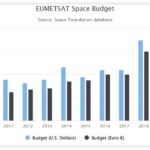
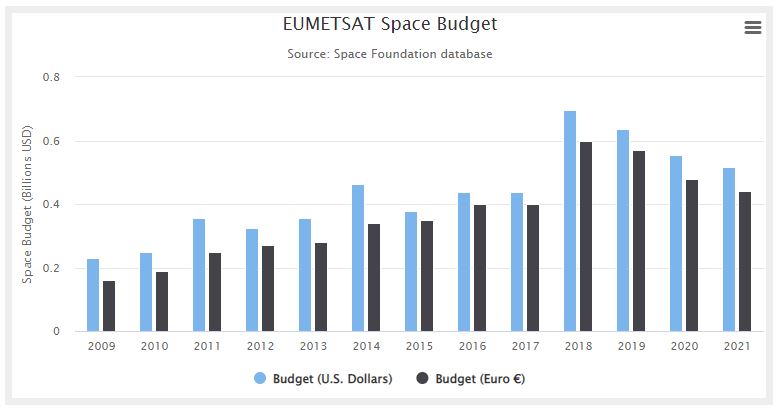
Civil government spending on space programs and activities in Europe comes from four sources . . .
Pentagon space spending has more than doubled since 2005
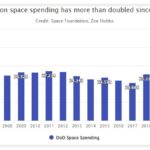
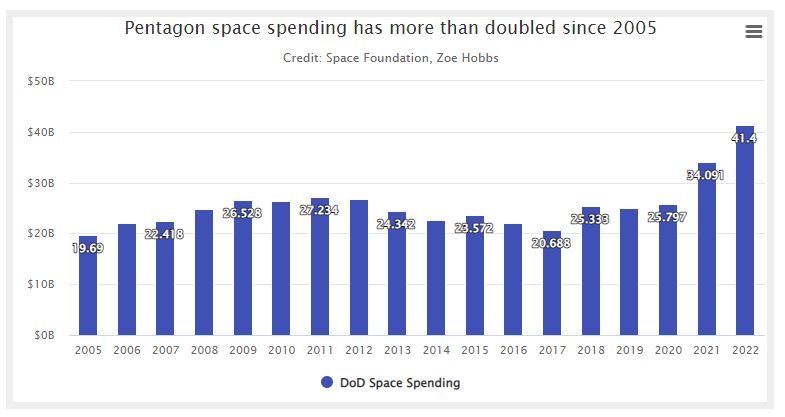
Space Foundation records show Pentagon space spending has more than doubled since 2005 from $19.7 billion to $41.4 billion
Space Workforce Trends in the United States, Europe, Japan, and India, 2011-2021
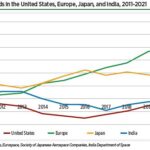
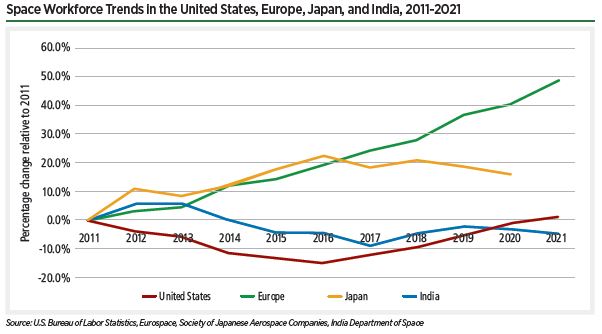
The U.S. space sector is composed of more than 198,500 individuals across private sector and government organizations. Private sector space employment continued a trend of growth that began in 2016, adding approximately 3,000 new workers from 2020 to 2021 to reach 151,797 individuals. Space manufacturing led this growth, offsetting a slight decrease in the size of the satellite telecommunications workforce.
Indian Department of Space Employment, 2011-2021
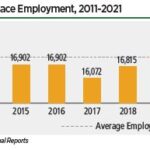
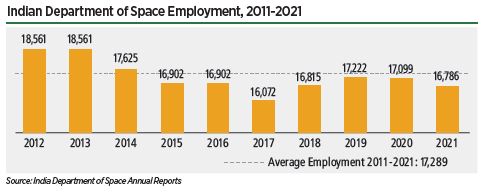
India’s Department of Space had 16,786 employees as of October 2021, a decrease of 1.8% from the previous year. India’s Department of Space had 16,786 employees as of October 2021, a decrease of 1.8% from the previous year. About 75% of the workforce is composed of science and technology workers, while the remainder focus on administration.
Japanese Space Industry Employment, 2010-2020
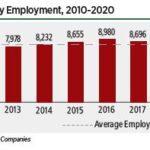
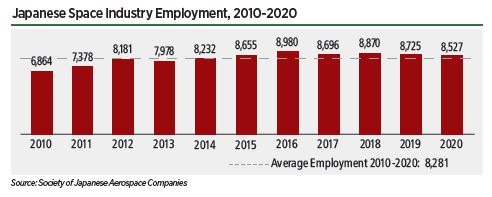
The Society of Japanese Aerospace Companies reports that the Japanese space sector employed 8,527 individuals in 2020, the most recent year for which data is available. This is a 2.3% decrease from the 2019 total of 8,725 employees. More than 70% of these employees work in the space vehicles sector, which includes launch vehicles, satellites, and the international space station. The remaining employees work on ground facilities and software relevant to space. Slight decreases in employment occurred across all portions of the space sector.
Space Insurance Industry Estimates, 2001-2021

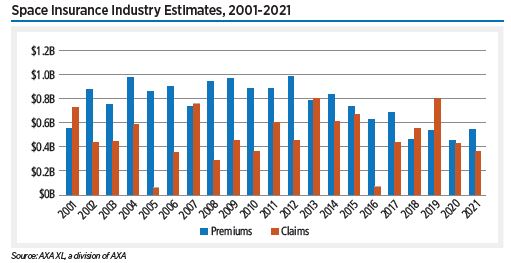
In 2021, despite high-profile insurance claims on numerous satellites. . . Net premiums totaled $537 million, and incurred losses were $362 million.
Launches in First Six Months of the Year, 1957-2022
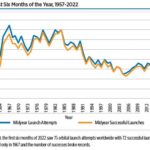
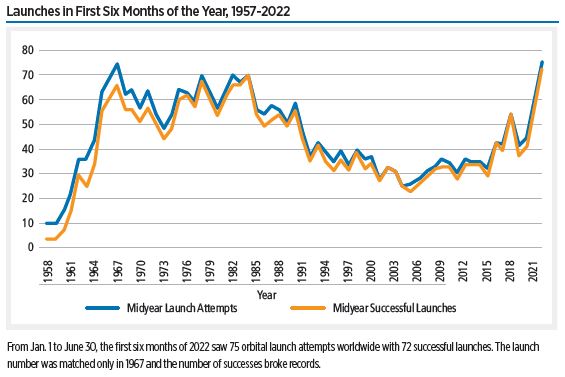
From Jan. 1 to June 30, the first six months of 2022 saw 75 orbital launch attempts worldwide with 72 successful launches. The launch number was matched only in 1967 and the number of successes broke records.
Global Space Activity by Category, 2005-2021
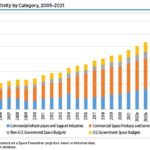
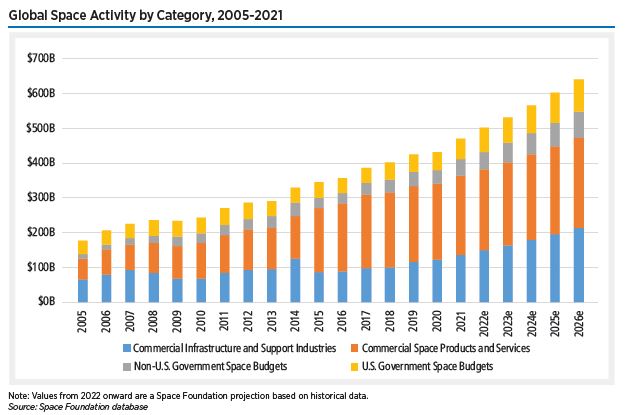
For this year’s analysis, Space Foundation incorporated historical data and 2022 government spending to project the global space economy’s growth over the next five years. Using our methodology, we predict that the total could reach $639 billion by 2026. Our modeling takes a more conservative approach based on average growth of established sectors and does not factor in developing sectors such as lunar habitation or still exploratory concepts such as asteroid mining.
European Space Industry Workforce by Sector 2003 – 2020
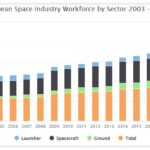
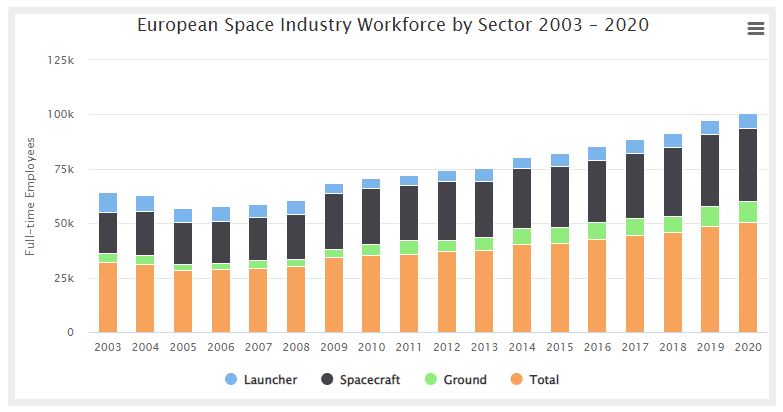
European space industry workforce by sector; launchers, spacecraft, and ground for 2003 through 2020.
U.S. Space Industry Employment and U.S. Total Employment Relative to 2010
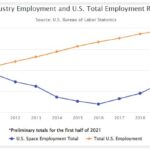
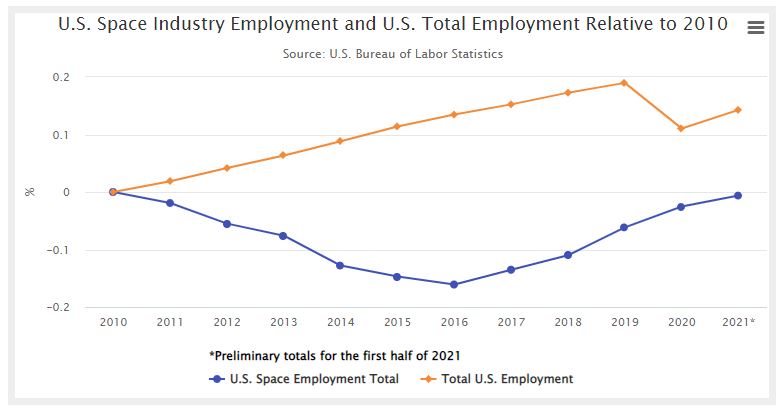
Estimates of the size of the U.S. space workforce are based on statistics made available in the U.S. Bureau of Labor Statistics (BLS) Quarterly Census of Employment and Wages. This program covers 95% of U.S. jobs and provides a consistent and reliable source of information to compare changes in the workforce over time.